Ole Hassager
Technical University of Denmark
1947 – Present
Chemical Engineer
Awarded Bingham Medal 2020
Fellow, Elected 2016
Citation
For fundamental contributions to the dynamics of complex fluids. Together with three other Bingham medalists,
Hassager developed the two volume series, Dynamics of Polymeric Liquids. His group perfected the technique of
filament stretching rheometry to make definitive measurements of the steady and transient rheology of polymer melts and entangled solutions.
It is a great honor and pleasure to introduce the 2020 Bingham Medal recipient, Professor Ole Hassager. I was fortunate to study under Ole’s mentorship for three years and
am forever grateful for his friendship and guidance. What follows is a short biography of Ole’s life and scientific achievements.
Early Years
Ole was born on the small island of Bornholm (588 km2) in the Baltic Sea. While this may not seem especially notable given that Denmark (42,933 km2
excluding Greenland) is composed of 443 named islands and one peninsula, Bornholm is quite special in its location and isolation. For one, it is closer to Sweden than it
is to Denmark. The island is located off the southeast coast of Sweden, and is approximately 250 km by boat from Copenhagen, Denmark’s largest city. The island sits
advantageously in the center of the Baltic Sea and is a strategic stronghold between Germany and Sweden.
For this reason, the Germans captured and occupied the island in
1940 and used it as a lookout post and listening station. It was during this occupation in 1943 that Johannes Hansen and explosive expert Lieutenant Captain Hassager Christiansen,
Ole’s father and source of his last name, made the brave decision to secretly photograph, sketch, and detail the yellow rocket that accidentally crash-landed into a turnip field on Bornholm.
Although the German’s confiscated copies of the photographs, their photos and sketches reached their intended target, the British intelligence service. These photos were
the first sign of Germany’s aspirations to develop flying bombs and rockets, which were later to become known as V-1 and V-2. It was later reported that the skillful and
accurate reports, drawings, and photographs helped the British correctly conclude the means of propulsion, the rocket principle, and the remote control (Kure, 1981).
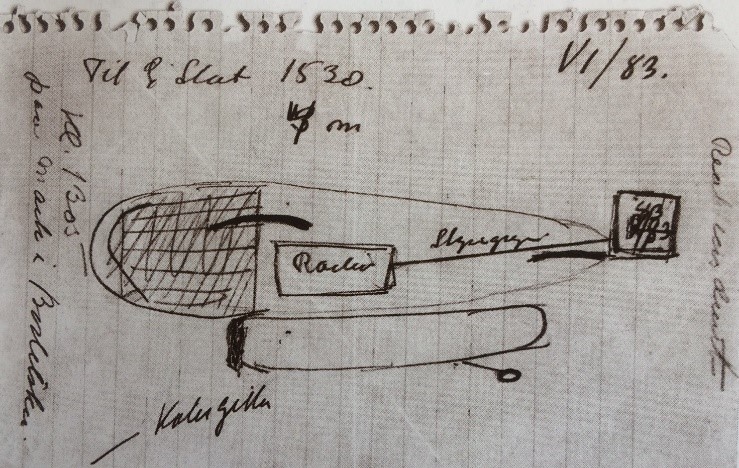 Figure 1. Sketches made by Hassager Christiansen. Reproduced from Knudsen (2000).
Figure 1. Sketches made by Hassager Christiansen. Reproduced from Knudsen (2000).
Several years later, Ole was born and gifted with his father’s attention to detail and scientific interest. This is evident from his gymnasium (high school) report card from 1964-65
showing excellent marks in science and mathematics. It also clearly shows Ole’s disinterest for sports “legemsøvelser” and music “sang”. Fortunately, singing did not count in his GPA
“gennemsnit”, unfortunately sports did!
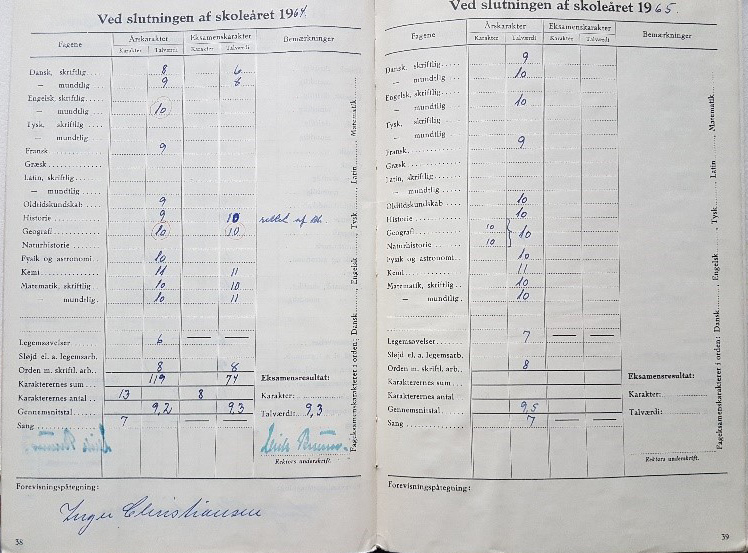 Figure 2. Report card from high-school showing excellent marks in math and science, but poor marks in singing and sports.
Figure 2. Report card from high-school showing excellent marks in math and science, but poor marks in singing and sports.
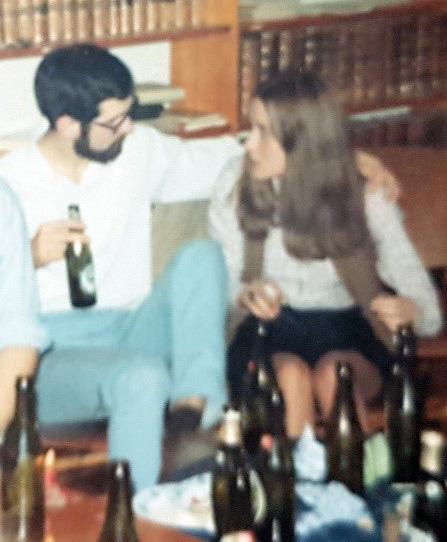 Figure 3. A photo of Ole trying to blend in during his college years. It is not clear if she is convinced.
Figure 3. A photo of Ole trying to blend in during his college years. It is not clear if she is convinced.
After gymnasium on Bornholm, Ole moved to Copenhagen to pursue a degree in Kemiteknik (Chemical Engineering) at the Technical University of Denmark (DTU). After graduating with his
master’s degree, he made the unpopular and difficult decision to continue his graduate education in the United States. At that time (late 1960s), Denmark was experiencing a wave of
anti-American sentiments arising from intervention in Indochina and the Vietnam War. Furthermore, the student revolution was well underway, and if you were not part of the movement,
you were part of the problem. Ole recounted that he often studied in solitude and secret so as not to catch the attention of his fellow student revolutionaries. The picture to the
left shows Ole blending in with his fellow students. It is unclear whether she is buying his sympathy to “the cause”. After graduation with just a large Danish mailbag filled with
his possessions, Ole set out to pursue his PhD at the University of Wisconsin, coincidentally a state that was settled by his Danish ancestors.
University of Wisconsin
At the University of Wisconsin, Ole joined the group of Robert (Bob) Byron Bird where he began working on his thesis work concerning the kinetic theory of bead-rod models. Ole has
very fond memories of his time in Wisconsin. Surprisingly, it was here and not on his home island that Ole discovered his passion for sailing, especially the M-20 scow. To the
right we see a photo of his membership card to the Hoofer Sailing Club. To this day, he still instructs young sailors at a sailing club in the northern part of Copenhagen. After
graduation, Ole was not quite ready to go back to Denmark. He decided instead with fellow research group member and office mate, Robert (Bob) C. Armstrong, to convince their advisor
Bob Bird to co-author a textbook on the continuum theory of polymer flow. At that time, there was no textbook that covered both the continuum and molecular aspects of polymeric liquids.
While Bob Bird tried to dissuade their efforts by detailing the incredible amount of work such an undertaking would require, the two were determined. Their efforts resulted in the
landmark two-volume series entitled Dynamics of Polymeric Liquids, with a fourth author Charles F. Curtiss participating in Volume 2. Included is a photograph of the three
authors arranged in increasing height. After this herculean effort, Ole returned to Denmark to serve his mandatory military service in the Navy. You can see a photo of Ole in uniform.
It is interesting to note that the blond gentleman clearly demonstrates that the Danish Navy was much laxer when it came to hairstyles than its US counterpart. After his military service
(1976), Ole returned to take a faculty position at DTU, where he worked until his retirement in 2019. We now highlight some of Ole’s scientific achievements during this time.
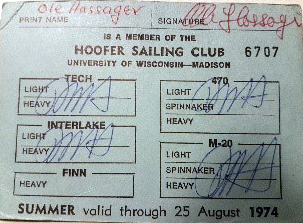
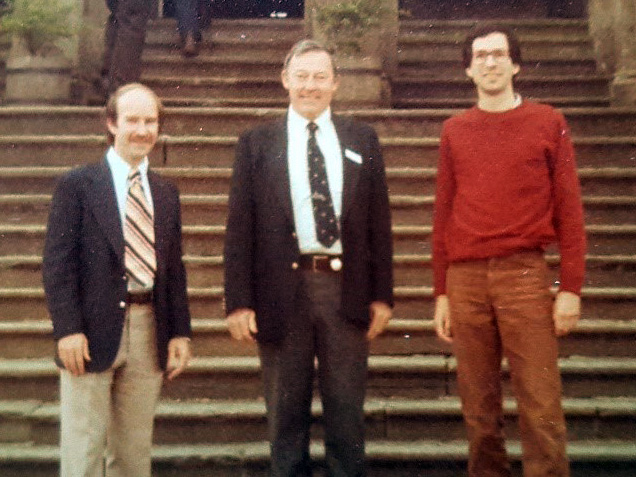
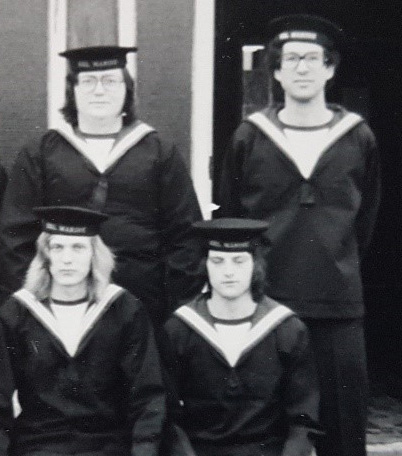 Figure 4. (TOP) A copy of Ole’s Hoofer Sailing Club membership card. (MIDDLE) Left to right: Robert C. Armstrong, Robert Byron Bird, Ole Hassager.
(BOTOM) Ole in Danish navy uniform just after completing Dynamics of Polymeric Liquids and returning to Denmark.
Figure 4. (TOP) A copy of Ole’s Hoofer Sailing Club membership card. (MIDDLE) Left to right: Robert C. Armstrong, Robert Byron Bird, Ole Hassager.
(BOTOM) Ole in Danish navy uniform just after completing Dynamics of Polymeric Liquids and returning to Denmark.
Scientific Achievements
Ole Hassager’s research has been devoted to the area of rheology and fluid mechanics of complex fluids. His early work was in the kinetic theory of polymer dynamics and in
the analysis of non-linear constitutive equations for viscoelastic fluids. His initial work as a professor at DTU was centered on pioneering finite element simulation of
Newtonian and viscoelastic flows via the Lagrangian kinematic specification. In 2000 he founded the Danish Polymer Center at DTU, an environment for both polymer chemistry
and physics. It was during this time that Hassager transitioned from theoretician to experimental rheologist with special focus on non-linear extensional rheometry. He has
published extensively, more than 140 publications, and his work has been extremely impactful to the rheological community and beyond. Below we detail some more specific scientific achievements.
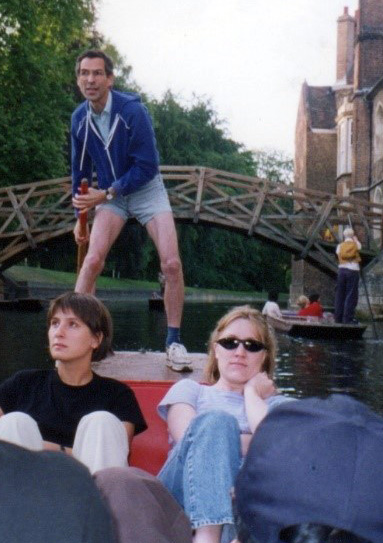 Figure 5. A photo of Ole punting with the intensity of steering an M-20 scow on the open sea in Cambridge with Gareth McKinley (photographer & punt commander), and Shelley Anna (bottom right).
Figure 5. A photo of Ole punting with the intensity of steering an M-20 scow on the open sea in Cambridge with Gareth McKinley (photographer & punt commander), and Shelley Anna (bottom right).
-
Nonlinear extensional dynamics of entangled linear polymers. In 2003, Hassager and coworkers made the first measurements of steady extensional viscosity of a nearly monodisperse
polymer melt. The purpose was to test the theoretical predictions of the Doi-Edwards (DE) constitutive equation for polymer melts. Until then, extensional experiments testing the DE model had
been performed on room-temperature entangled polymer solutions. While dilute polymer solutions showed a general agreement with the predictions of the DE model accounting for chain stretch, to
the surprise of the rheological community polymer melt extensional measurements showed no such increase. This disagreement plagued the rheological community for nearly a decade. The first real
breakthrough came when Hassager and co-workers managed to bridge solution and melt behavior using viscous oligomers as solvent. Only recently is a clear picture emerging that involves the
nematic interaction between polymer chains in the melt state not possible in solution, and the increase of the distance between entanglements (and thus the segment extensibility) upon dilution.
The Hassager group data is still the quintessential test for nonlinear constitutive models of polymer melts and blends.
-
Nonlinear dynamics of industrial polymers. Long chain branched polyethylenes exhibit a remarkable overshoot in the tensile stress difference upon inception of constant rate
extensional flow. These results have intrigued theorists and have been met with skepticism of experimental method. Hassager has played a leading role in the demonstration of the phenomenon and
in putting it into a broader context in terms of comparison with cross-slot measurements, creep measurements, constitutive analysis and flow induced crystallization.
-
Nonlinear extensional dynamics of model polymers of complex architecture. Hassager and co-workers have made significant contributions in the synthesis and rheological
characterization of polymers of well-defined architecture as model systems to emulate industrial branched polymers. The stress overshoot was attributed to the presence of a “cross-bar” via
the synthesis and rheology of a polystyrene ‘Pom-Pom’ molecule (or “H-polymer”) with well-defined cross-bar. More recently Hassager and coworkers have confirmed the theoretical prediction by
Ianniruberto and Marrucci that entangled melts of branched polystyrenes behave like linear polystyrenes in the steady state of fast extensional flow. Finally, in collaboration with last year’s
Bingham medalist (Dimitris Vlassopoulos) Hassager and coworkers discovered the unexpected dramatic strain hardening of entangled ring macromolecules.
-
Finite element modeling of viscoelastic flow. Hassager has pioneered the application of the Lagrangian specification in both Newtonian and non-Newtonian fluid mechanics. This has
led to finite element methods that handle 3D transient deformation and flow of non-linear viscoelastic materials with free surfaces with relative ease. For example, these efforts have been able to
analyze and explain sample break-up in dual cylinder wind-up extensional measurements, such as the extensional viscosity fixture (EVF) and the SER device.
-
Fracture in viscoelastic liquids. Hassager and co-workers were the first to combine extensional rheometry with high speed imaging in the investigation of fracture. The pioneering
work is best summarized by a Viewpoint article by physics fracture expert Jay Fineberg who wrote: “Hassager and co-workers’ study demonstrated that the classic fracture picture crosses over to a
characteristic behavior first predicted by Pierre-Gilles de Gennes, in which the viscous response of the material dominates the elastic response … The idea of soft materials has challenged our
classic notions of fluid and solid materials. Experiments such as these manifestly demonstrate that processes such as brittle fracture … can indeed take place in fluid-like materials …”
-
Development of instrumentation for rheology. Hassager and co-workers pioneered the development of actively-controlled filament stretching rheometrylogy with temperature control.
For nearly a decade, Hassager’s laboratory was the only place capable of performing filament stretching measurements on polymer melts. In 2015, a controlled filament stretching rheometer, the
VADER1000, became commercially available from Rheo Filament ApS, a start-up company co-founded by Hassager. The EVF/SER fixtures and the VADER1000 rheometer are the only commercial instruments
presently available for extensional melt rheology. Unique features of the VADER1000 are the ability to study tensile stress relaxation, tensile creep, and reversed flow in both polymer melts and
solutions.
One recipe for Ole’s success is his willingness and openness for collaboration. One such example is his third consecutive participation in a polymer-focused EU funded project. Many of these
collaborations originate from discussions at meetings and invitations to spend time in Copenhagen as Ole’s guest speaker. During my time at DTU, I was fortunate to enjoy several visits from
researchers all over the world. It was a fantastic way of developing new ideas, talking about impactful problems, and developing a broader understanding of rheology and its role in industry
and science. It is no wonder that Ole has always chosen thoughtful, impactful problems to solve. He certainly serves as a beacon for rheology in Northern Europe and continues to be an inspiration
for young rheologists (me included). While his Danish modesty does not allow him to acknowledge his own significant achievements in science, join me in celebrating them for him. This year’s Bingham
medal goes to a most deserving rheologist, but more importantly to an amazing educator, advisor, and steward of science.
Sources
Ann Vibeke Knudsen (ed), “Bornholm at War 1940-1946”, Bornholm Museum (2000).
Børge Kure, “An island at war, Bornholm’s occupation history - based in the daily newspaper Bornholmeren”, Rønne (1981).